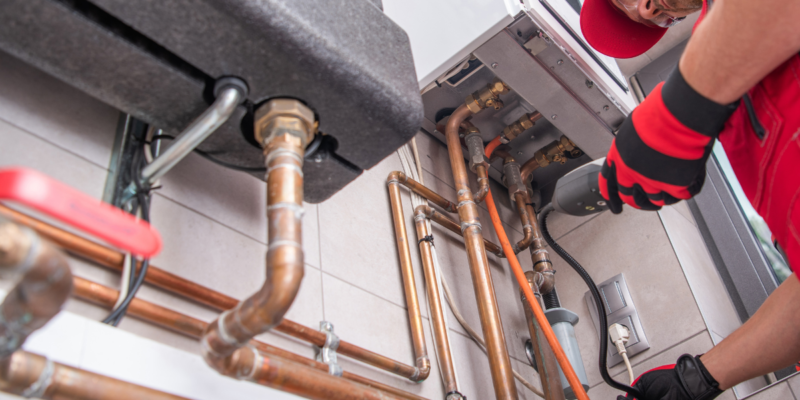
Brass tubing is a versatile material used in various industries for its durability, corrosion resistance, and aesthetic appeal. This blog will explore everything you need to know about brass tubing, including its characteristics, applications, and the top brass tubing manufacturers and suppliers in the industry.
What is Brass Tubing?
Brass tubing refers to hollow cylindrical sections made from an alloy of copper and zinc, known as brass. This alloy combines the strength of copper with the machinability of zinc, resulting in a material that is both durable and easy to work with. Brass tubing is available in different sizes, thicknesses, and grades to suit a wide range of applications.
Properties and Benefits of Brass Tubing
- Corrosion Resistance: Brass tubing exhibits excellent resistance to corrosion, making it suitable for outdoor and marine applications.
- Strength and Durability: Brass is known for its strength and durability, providing reliable performance in various environments.
- Machinability: Brass is easy to machine and fabricate, allowing for complex shapes and designs.
- Aesthetic Appeal: The golden color of brass lends a decorative touch, making it popular in architectural and interior design applications.
- Thermal and Electrical Conductivity: Brass has good thermal and electrical conductivity, making it useful in heat exchangers and electrical fittings.
Applications of Brass Tubing
- Plumbing and Fluid Transfer: Brass tubing is widely used in plumbing systems for its corrosion resistance and ease of installation.
- Heat Exchangers: Due to its thermal conductivity, brass tubing is used in heat exchangers for efficient heat transfer.
- Architectural Applications: Brass is favored in architectural applications for its aesthetic appeal, used in railings, door handles, and decorative fixtures.
- Automotive and Marine Industry: Brass tubing finds applications in the automotive and marine sectors for fuel lines, brake lines, and ship fittings.
- Industrial Equipment: Various industrial machinery and equipment use Hollow Brass tubes for hydraulic and pneumatic systems, where reliability is crucial.
Choosing the Right Brass Tubing Manufacturer
Selecting a reliable brass tubing manufacturer is essential to ensure quality and performance. Consider the following factors:
- Quality Standards: Look for manufacturers that adhere to international quality standards such as ASTM and ISO.
- Customization: Choose a manufacturer capable of providing customized brass tubing solutions to meet specific requirements.
- Experience and Reputation: Opt for manufacturers with a proven track record and positive customer feedback.
- Technical Support: Ensure the manufacturer offers technical support and assistance throughout the project lifecycle.
Top Brass Tubing Manufacturers and Suppliers
Here are some leading brass tubing manufacturers and brass tubing suppliers known for their quality products and reliability:
- Global Metals: A renowned supplier of brass tubing, offering a wide range of products for diverse industrial applications.
- Precision Brass Works: Specializes in precision-engineered brass tubing solutions tailored to specific customer needs.
- Elite Brass Solutions: Provides high-quality brass tubing and exceptional customer service to industries worldwide.
- Premium Brass Supplies: Known for their reliable supply chain and commitment to delivering superior brass tubing products.
Types of Brass Tubing:
- Seamless Brass Tubing:
- Description: Seamless brass tubing is manufactured without any welding joints, resulting in a smooth, uniform structure.
- Properties: Offers high strength and reliability due to its seamless construction. It is suitable for applications requiring pressure resistance and leak-free performance.
- Applications: Used in hydraulic systems, instrumentation, and precision engineering where consistent performance is crucial.
- Welded Brass Tubing:
- Description: Welded brass tubing is formed by welding together pieces of brass, creating a jointed structure.
- Properties: Economical and versatile, welded brass tubing is available in various sizes and thicknesses. It is suitable for less demanding applications where cost-effectiveness is important.
- Applications: Commonly used in plumbing, HVAC systems, and general-purpose industrial applications.
- Drawn Brass Tubing:
- Description: Drawn brass tubing is produced by drawing brass through a series of dies to achieve the desired dimensions and wall thickness.
- Properties: Provides precise dimensions, smooth surface finish, and improved mechanical properties. It is ideal for applications requiring tight tolerances and excellent surface quality.
- Applications: Used in electrical components, automotive fittings, and decorative applications where aesthetics and dimensional accuracy are critical.
- Extruded Brass Tubing:
- Description: Extruded brass tubing is formed by pushing brass billets through a die to create the desired shape and dimensions.
- Properties: Offers good dimensional control, high mechanical strength, and uniformity. It is suitable for applications requiring complex shapes and profiles.
- Applications: Widely used in architectural applications, furniture manufacturing, and structural components where design flexibility and strength are important.
- Square and Rectangular Brass Tubing:
- Description: Square and rectangular brass tubing is produced in specific cross-sectional shapes rather than circular.
- Properties: Provides structural stability and aesthetic appeal, suitable for applications requiring box-shaped profiles and seamless integration into designs.
- Applications: Used in construction, furniture making, and artistic installations where square or rectangular profiles are preferred.
Considerations for Selection
When choosing brass tubing, consider the following factors:
- Material Grade: Select the appropriate brass alloy based on corrosion resistance, strength, and machinability requirements.
- Size and Dimensions: Choose tubing sizes and wall thicknesses that match the application’s pressure and flow requirements.
- Surface Finish: Consider the required surface finish for aesthetic or functional purposes.
- Application Requirements: Evaluate the specific environmental, mechanical, and regulatory requirements of the application.
Conclusion
Brass tubing remains a versatile material prized for its strength, durability, and aesthetic appeal across industries. Whether for plumbing, architectural design, or industrial applications, brass tubing offers reliable performance and longevity. Choosing the right brass tubing manufacturer ensures high-quality products that meet specific project requirements, making it a crucial decision for any application. Explore the options offered by top brass tubing suppliers to find the perfect fit for your needs.









